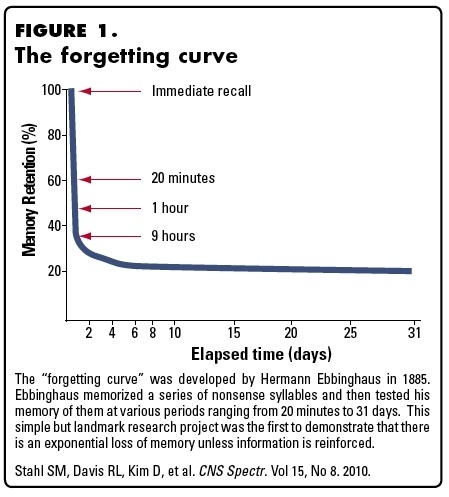Mike Bollinger Discusses Skills Development Challenges And Data-Driven Discoveries
Mike Bollinger is an accomplished executive with 20 years of industry experience. In his current role as Vice President of Strategic Initiatives with Cornerstone, he is responsible for internal research as well as strategy development around outcome-based goals. Mike helped found and currently manages the Cornerstone People Research Lab (CPRL), whose mission is to generate data-driven discoveries about the world of work today and identify emerging trends that will give rise to new work models. Mike also collaborates with Cornerstone clients in an executive capacity as a leader, influencer, and change agent who applies expertise to complex businesses. Today, he speaks with us about building crucial skills and what the future holds for L&D.
As the Global Vice President of Strategic Initiatives with Cornerstone, you are responsible for internal research and strategy development. Based on your experience, what do you think is the most common challenge that organizations face when it comes to aligning their L&D initiatives with real-world outcomes?
The classic answers here are most often learner engagement and measuring successful outcomes.
However, I would add one fundamental ongoing challenge that may just be more difficult to accomplish and may lay upstream to the first two. That difficulty lies in the nuance in execution; simply put, alignment of skills to the business need.
In our own recent research, we found that when L&D leaders are determining which new skills their workforce needs for the future, they often look inward. They examine their company's business strategy or talk to their employees and leaders to find skills gaps. Building employee capabilities and bridging skill gaps are vital processes, and we are all actively engaged. However, in addition to examining internal needs, companies need to pay attention to external forces. Our research found that employers don't look closely enough at what their competitors are doing, how their industry is changing, how roles are laid out, and how their technology is changing. A successful new skilling approach requires that L&D leaders look beyond their four walls—or, in this case, their four virtual walls—to make sure that their internal efforts align with larger, external changes.
If they take this back to their team(s) as inputs into the L&D strategies, they can align across regions, managers, and business units. That alignment yields an understanding of how each is measured. L&D can build personalized pathways against that analysis, with a comprehensive game plan targeted at closing the many different gaps.
Developing a plan is your measurement. True learning doesn't occur unless there's a behavior change. So, first, figure out how to measure employees' behavior changes. Then, understand how the change impacts a business outcome. Get a baseline measurement so that there's something to compare new data to later. Measure yourself and your initiatives against how the individual business groups are measured. Track employees' sentiment towards L&D efforts as well—this will help companies determine whether they are actually closing the gap.
By doing this, you address the classic questions of engagement and measurement, but upstream. Both intrinsic value for the learners and extrinsic value for the organization are tangible results of these efforts.
You also manage the Cornerstone People Research Lab (CPRL). Can you tell our readers a bit more about its mission and why it was founded?
The mission of the Cornerstone People Research Lab (CPRL) is to generate data-driven discoveries about the world of work today and identify emerging trends that will give rise to new work models. Its two primary areas of focus are corporate Learning and Development trends and issues related to the experience of people at work. We make this research available to everyone because we believe a rising tide lifts all boats in this regard.
For several years, we started to do sponsored research (career mobility, economic impact, etc.). About three years ago, we had an internal discussion about not only continuing that work but doing our own research as well. The idea behind our original work was to dig deeper into topics we were passionate about at Cornerstone, as well as to do longitudinal studies (examining the change in our analysis over a time period).
The "2022 Global Skills Report" explores how successful organizations worldwide are using skills to address emerging challenges. In your opinion, what was one of the most surprising findings about the employee-employer confidence gap? What do you think is the most significant differentiating factor that sets high-performing organizations apart from the rest?
The 2022 report was a prime example of that longitudinal analysis I mentioned in the question above. The original report in 2020 not only had a global reach but also included sentiment analysis through both the employer lens and the employee perspective.
The original report had a very unique result which we termed "The Skills Confidence Gap," i.e., the difference between how aligned people and organizations are when they rate the organization's quality and effectiveness of skill development opportunities.
This gap was statistically significant—there were 30 points between the employer's investment confidence and how employees felt about consuming the investments that were being made.
When we embarked on our 2022 study, we asked after the same items but added details around the "why" and an additional perspective from traditionally high-performing organizations (HPOs). We found that the gap increased to 31%—however, when it came to high-performing organizations, the gap was much less at only 11%, while laggard organizations were at a stunning 43% confidence gap. This alignment on perceptions in HPOs carried through into all the detailed questions.
There are a few differentiating factors that shined through setting HPOs apart from the others. First is that success did not come through with a single initiative. The report found that high-performing organizations tended to have broad initiatives and not just a singular approach. This came through as an absolute best practice.
Second, HPOs are focused on future skills. Ninety-nine percent of employees of HPOs felt like their organization could take action on closing their skills gaps. This is compared to only 51% of laggard organizations.
Finally, an internal-first hiring mindset was the catalyst for many of the other high-performing outcomes we saw in the report. It reflected the alignment that employees at those organizations felt with their employers.
Skills development is crucial for long-term business success. Based on the report and your personal insights, what are a few of the common characteristics of an effective skill-building program today?
We've entered a new, virtual world of work that requires different types of skills, and it's an opportunity for employees to adopt them. Some people are using low-code technologies—like collaboration platforms, digital toolsets, and video conferencing tools—for the first time and have developed new technical skills as a result. Our soft skills have had to change as well. We're learning how to effectively communicate with others virtually since in-person interactions aren't an option.
Next, we should be focused on looking for adjacencies between skills. For example, if a company needs natural language processing skills, a future-focused organization finds employees with skills that are similar to language processing—like someone in the marketing department who communicates for a living. Identifying adjacencies makes new skilling efforts more effective and reduces the learning curve.
This is an incredible opportunity for employees, but to fully take advantage of it, they need to be able to set aside time to identify and explore new skills. This report made it clear that many employees feel like they don't have enough time for self-directed learning. But lack of time is also a warning sign for other things, like uncertainty, fear, and/or a lack of guidance. So, it's crucial for organizations to find ways to help them along on their learning journey. This will not only encourage them to adopt a self-directed approach to learning, but it gives them the chance to benefit from the investments employers are making in them.
For employers undergoing rapid digital transformation, many looked internally to see who they had in the workforce to contribute to or lead these initiatives. What some found is their "inventory" of skills required some work and they didn't execute as quickly as they could have. Organizations should start by investing in management teams and their learning, as this has a secret "multiplier effect" that yields results at faster speeds. Then, encourage managers to talk to their employees about their career goals and motivations, and adjust their learning accordingly. By gathering a deeper understanding of employees' individual skills, it's easier to locate adjacencies and develop new skills with speed. The organizations that learn this lesson and invest in better visibility into their workforce will have a stronger capability to respond to disruption in the future.
What do you think the future holds for L&D, particularly regarding skills development and remote talent management?
This is a tough one. I previously did a session with Don Taylor at the Learning Technologies Conference, where we looked back on some of our failed predictions as an industry. For example, in 2015, we all thought that the idea of digital privacy would disappear in the social media explosion, many thought eLearning was a fad, and that gamification would change everything.
But ultimately, what Don and I landed on was that, as L&D practitioners, we should be reminded that we need to develop as well, and as a result, our future focus areas should include:
- A focus on the skills of the future. This is an evolution rather than a revolution, and we need to find a way to keep skills evergreen.
- Actionable insights are what get you in the door. Data is everywhere, but it is how you make sense of that data and turn it into knowledge to gain valuable insights. You don't need perfect data; you just need to use the data you have wisely.
- Having business-specific acumen is central to the L&D role. You need to understand what is going on in your business. How do you measure success? What insights can be drawn from these measurements? And how can these be aligned to the goals of the wider business?
For our future to be bright, our strategies need to include:
- Connectedness – To maximize impact within a business, leaders must create a connected experience for businesses and employees.
- Data – Leverage AI to streamline your approach and gather baseline results to work from.
- Unrelenting focus – Learning and Development should be seen as a core business priority, not just a learning priority.
While we cannot accurately predict the future of L&D, we can put measures into place to help soften the blow of change. Products with a specialist focus, like Cornerstone, help to create a connected experience between businesses and employees—while gathering and analyzing skills data that improves productivity and deepens insights. Working with technology as one of the tools in the broad initiatives that high-performing organizations do so well, one can revolutionize the way a business functions.
2022 is the year for L&D to really make itself known and have more of that seat at the table.
What is one of your standout eLearning client success stories?
A story that really stands out to me is from Deutsche Post DHL Group (DPDHL), a leading logistics company with operations in post, freight, supply chain, and e-commerce. DPDHL is made up of a family of close-knit business divisions all working together to meet customers' needs.
For DPDHL, it is important to focus on what excellence looks like in this digital world and how its people can adapt to that change. With the pace of change moving at incredible speed and new skills becoming increasingly vital in today's world of work, DPDHL turned to Artificial Intelligence (AI) to help align skills with future challenges for the business.
A major part of DPDHL's 2025 talent strategy is identifying the skills currently in their team today and uncovering potential skills that are relevant to tomorrow. This is especially important, as DPDHL created 20,000 new jobs last year and now has 570,000 employees in 220 countries, some 400,000 of which are customer-facing in the field. One of the biggest challenges tied to this objective is how to bring in a skills ontology that can reflect the differences between desk-based roles and field roles, such as those handling and delivering parcels. This is where AI comes into play.
DPDHL turned to Cornerstone's skills ontology offering, an AI-powered skills engine that identifies capabilities within the organization, which can then be matched to jobs within the company and pinpoint potential skills gaps. The Cornerstone Skills Graph is built on a robust and constantly updated skills taxonomy of over 53,000 unique skills pulled from millions of job positions across every industry around the globe.
Now, at the click of a button, DPDHL can identify what might be the next career move for an airside handler or a supervisor in a warehouse, and what skills they have that might be transferable to other parts of the business, or that they'd like to develop in order to be an interesting candidate for another division or another country.
In choosing the right partner, DPDHL set out clear objectives to answer both the needs of its employees—fluid career paths—and the needs of the business—retaining its talent and future-proofing itself.
Once the skills are out on the table, the employee can then choose what areas they'd like to develop in order to move up or into a new career path, opening up many possibilities and mapping out their future with the company.
Choosing this strategic skills-first approach to development means that employees at DPDHL are continually growing and learning, setting career paths that are not necessarily linear and instead completely personalized to them.
As a result, DPDHL has increased employee retention, promoted from within, and saved millions of dollars in external recruitment costs. In addition, DPDHL gathered more data on their employees' skills after three weeks of being live with the skills profile than they did in more than five years of their previous profile, giving them a stronger baseline understanding of who their people are.
Employees at DPDHL are benefiting from:
- A structured career path. Beyond matching employees to opportunities, DPDHL aspires to offer employees a way to keep career development in sight on an ongoing basis—from planning future roles to receiving suggestions to develop the necessary skills.
- Increased employee retention. As employees can envisage their future at DPDHL, fewer are leaving and there is a decreasing need to hire externally. In fact, DPDHL has had a drop of 10% in external recruiting resources, saving millions.
- More visibility to internal recruiters. DPDHL enables its recruiters to have increased visibility of the internal talent pools based on more than received applications for a position. That way, employees will have a way to raise their hands for new positions, and recruiters will be able to see their matches without a need for an active application.
- Both talent management and talent development. DPDHL wants its people to grow, and for that to be celebrated. It may feel hard on managers when employees move teams and departments at first, but in the long term, people are engaged, their experiences are improved, and the business is overall more efficient and effective.
- Sense of purpose. Thanks to AI and Cornerstone, employees now feel like they have a sense of purpose in the workplace, which is one of the most important attributes that people look for in an organization today.
- Plugging the skills gap. From an HR perspective, AI allows DPDHL to identify skills gaps that otherwise would go unnoticed until it is a bigger problem. This better prepares the company for the future, and as a result, DPDHL becomes a more sustainable business in the long run.
Read more Cornerstone success stories to discover how the right partner can help you revolutionize your talent development strategy.
Wrapping Up
A big thank you to Mike Bollinger for sharing his insights with our readers and for shedding light on current and emerging skills development challenges. Learn more about how successful organizations worldwide are using skills to help themselves and their people thrive in a new world of work by downloading the Global Skills Report.








